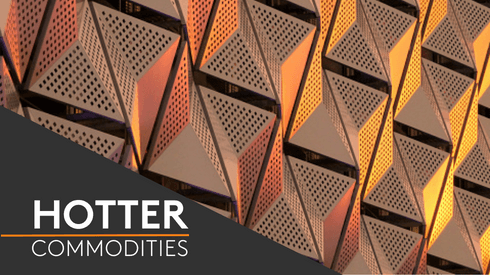In an interview during the annual CESCO industry week in Santiago, Chile, Bold Baatar said that the higher the exposure to the spot market, the more unsustainable smelter operations become.
“If the spot market is the rate that is the long-term rate for smelters, it’s not sustainable. But if you run the numbers, and if some of these smelters have 70% benchmark and 30% spot exposure, they’re still making money,” he told Fastmarkets.
“So, it comes down to that balance – who of the smelters were able to enter into the benchmark, and who’s exposed to spot [TCs] at the moment?” Baatar said.
Get notified when Andrea Hotter publishes new articles and interviews on the natural resources sector. Receive the latest stories straight to your inbox.
Copper smelters typically have some percentage of copper concentrate contractual supply tied to annual benchmark TCs, which were agreed at $80 per tonne between Antofagasta and China’s Jinchuan Group for 2024 in November.
But the spot market has changed considerably since then because supply tightness has worsened.
Fastmarkets calculated the weekly copper concentrates TC index, cif Asia Pacific at $0.10 per tonne on April 12, a record low, down by 95.65% week on week from $2.30 per tonne.
TCs are the fees that mining companies pay smelters to have their semi-processed ore – or concentrate – turned into finished metal. Typically, tighter spot supply leads to a drop in spot TCs and RCs.
“Rio Tinto entered [into] benchmark rates, and we’d like our customers to be profitable, so clearly, the spot market is not sustainable,” Baatar said.
Some facilities have already reduced operating rates and cut capacity, and China’s Copper Smelters Purchase Team (CSPT) recently called for more cuts due to persistent tightness in concentrate availability.
Industry participants expect more cuts to follow while low TCs persist.
According to Baatar, there are over 60 Chinese copper smelters, smelting over 11 million tonnes annually, and there are only four North Americans smelters – two in the US, one in Canada and one in Mexico.
“The smelting market is not Americas-based. What we have to be really clear on is what’s happening in China in the concentrate market. There’s been a rapid acceleration of smelting capacity there,” he said.
China was previously forecast to add at least 3.4 million tonnes per year of new copper production capacity by 2026. The majority of this capacity will come from three projects by Tongling Nonferrous, which will make it the biggest smelting company in the world at over 2 million tpy.
Baatar noted that China’s industrial policy is very forward-looking in terms of supporting sectors that are focused on energy transition, which boosts copper demand.
“China has built the largest wind and solar parks, and obviously, there’s a lot going on in the battery storage space. All of this requires more copper,” he said.
“It’s very methodical; it’s not a short-term, spot-driven plan,” he added.
Rio Tinto produced 620,000 tonnes of mined copper in 2023 and expects mine production of 660,000-720,000 tonnes in 2024.
In Hotter Commodities, special correspondent Andrea Hotter covers some of the biggest stories impacting the natural resources sector. Sign up today to receive Andrea’s content as it is published.





